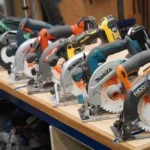Any type of faucet can leak, but it’s rare for one to stop working altogether. When that happens, the wise plumber suspects the water system.
Why did my kitchen faucet all of a sudden stop working?
Rust is a common reason why your taps may suddenly stop working. If you notice that rust has gathered on your tap’s exterior, it is a sure sign that it has gathered on the interior too. Rust comes from general wear and tear and can cause blockages. If you see any rust, you should replace your tap with a new faucet.
Why would only one faucet stop working?
If only one faucet is having problems, you may simply be dealing with a clogged aerator. You should also see if the faucet’s stopcock is open, as this too may be causing it to shut off.
Why is there no water coming out of my faucet?
If the pipe isn’t leaking from anywhere and the water still isn’t coming out of your faucet, then the reason for the problem might be clogged pipes. Sediment buildup can restrict the flow of water through your pipes. Eventually, sediment buildup causes the same pressure and flow problems that leaks or dents usually do.
How do you fix a faucet that won’t turn on?
Clean out the inside of the faucet valve with vinegar, and repeat the cleaning on the cartridge. Inspect for metal shavings, worn parts, grit, or mineral buildup. A scrub brush can help loosen deposits. Use the plumber’s grease to lubricate any threads you can see.
Why won t my single handle kitchen faucet turn on?
This is often caused by sediment or debris in the cartridge, mineral buildup in the faucet parts or a damaged seal within the cartridge. Disassembling the faucet and cleaning away any scale or mineral buildup may fix the problem. If the cartridge is damaged, replace it.
Why is there no pressure at my kitchen faucet?
The most common causes of low water pressure in a kitchen sink are a clogged aerator or a clogged cartridge. The aerator is the part of the faucet that is at the very end of the spout; it is the last thing the water touches before it comes out into the sink.
Why is one side of my sink faucet not working?
Some major reasons water might not be dispensing from the hot side of the faucet include; airlock issues, a faulty water heating system, blocked plumbing, valve malfunctions, or pipe blockages.
What is the thing that turns on the faucet?
Faucet lever: This is the control for the water supply. You’ll use this to turn water on and off during normal operation. Most kitchen sinks utilize a single lever that can be turned left or right to control the temperature of the water.
Why is the water not turning on?
Check your plumbing for signs of leaks or dents. Follow your plumbing water supply from the main water line up, inspecting the pipes for condensation, dripping, or dents. A large leak or significant dent in a pipe can block water from going through to where it needs to go. Check with the water company.
What is the lifespan of a kitchen faucet?
Typically, kitchen faucets can last between 15-20 years. Lifespan depends on their quality and other factors such as whether or not it was installed properly and how hard the water is. How much wear and tear it gets can also affect how long your kitchen sink faucet lasts.
What is the most frequent failure in a typical faucet?
Rust or buildup: The most common issue that arises from a faucet is buildup on the fixture. In most instances, small deposits should not be cause for concern; however, rust or excessive calcium crusting on a faucet may cause unwanted plumbing problems or water flow concerns.
Is it better to repair or replace kitchen faucet?
Faucets are generally built to last for 15-20 years. If your faucet is nearing the end of its lifespan, it might be time to consider a replacement. If your faucet constantly needs repairs. One of the most common signs that it’s time to replace your faucet is when it needs constant repairs to function.
How does a single handle kitchen faucet work?
The discs slide back and forth on top of each other, allowing water to move through one hole or the other. Hot or cold water will flow out of the faucet depending on the position of the discs. Voila… water!
How do I get the water pressure back in my faucet?
- Remove the aerator from the faucet using pliers and a towel (to prevent scratching).
- Check the aerator for minerals or other deposits.
- Turn on your faucet.
- Rinse the aerator in hot water.
- Use a small brush (an old toothbrush is great) to thoroughly clean the aerator.
- Replace the aerator.
How do you fix no water pressure?
- Contact your neighbors.
- Check your well pump.
- Test the pressure yourself.
- Clear the clogs.
- Open your main water valve.
- Replace the water pressure regulator.
- Look out for leaks.
- Install a home water pressure booster.
Can you unstick a stuck valve?
Again, get oil where you can and apply enough heat that it is just uncomfortable to hold. With a hyde, wood or plastic mallet, tap the top of the valve stem gently until the piston just starts to move. Install the valve button again and pull. If it won’t move, apply a little more heat and tap just a little harder.
Why do water valves get stuck?
Valves become stuck because they don’t get used very often. Minerals from hard water, rust and sometimes even random gunk can get trapped inside the valves, cementing them in place.
Why do water valves get stuck?
Valves become stuck because they don’t get used very often. Minerals from hard water, rust and sometimes even random gunk can get trapped inside the valves, cementing them in place.
What is a clogged aerator?
Aerators have a mesh screen inside them. This screen can get blocked by sediment or debris, which reduces your faucet’s flow and pressure. Over time, calcium deposits can build up inside the aerator, but aerator clogs are also common after your water has been shut off for a plumbing repair.


